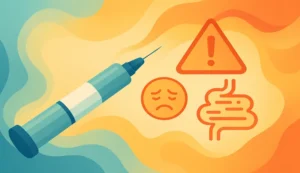If you’ve ever felt that deep, shooting pain radiating from your lower back down to your legs, you already know how unbearable sciatic nerve pain can be. The worst part? It shows up uninvited after sitting too long, lifting wrong, or simply waking up the wrong way. While most people turn to painkillers or pricey treatments that offer only short-term relief, there’s a faster, safer, and completely natural way to break free from sciatica’s grip.
In this guide, you’ll discover a simple 10-minute method backed by experts and loved by thousands that can help ease your pain without pills or surgery. Ready to take the first step toward lasting comfort? Let’s dive into the natural fix that could change your day and your life.
What Is Sciatica and Why Does It Hurt So Much?
Sciatica isn’t just a sore back it’s a full-body disruption. The sciatic nerve is the longest and thickest nerve in the body, running from your lower spine through your hips and down each leg. When this nerve is compressed or irritated whether by a herniated disc, spinal stenosis, piriformis syndrome, or poor posture it can cause burning, shooting, or stabbing pain that radiates down the buttock and leg.
Common symptoms include:
- A sharp or electric shock-like pain in the leg or lower back
- Numbness or tingling that travels down the leg
- Weakness in the foot or toes
- Pain that worsens with sitting or prolonged standing
Why Most Sciatica Treatments Don’t Work Long-Term
From over-the-counter meds to expensive chiropractor visits, many sciatica sufferers find themselves caught in a frustrating loop: temporary relief, then recurring pain. While painkillers might mask the discomfort, they don’t treat the root cause and prolonged use can lead to side effects or dependency.
Other treatments, like steroid injections or surgery, are more invasive and not always guaranteed to work. What most people need is a natural, consistent solution that gently releases the pressure on the sciatic nerve and supports long-term healing without risk.
Step-by-Step: The 10-Minute Sciatica Relief Routine
This routine uses a combination of stretching, nerve flossing, and breathing techniques that work together to mobilize the sciatic nerve, reduce inflammation, and relieve muscle tension around the lower back, glutes, and hamstrings.
Always perform movements slowly, within a comfortable range, and stop if you feel sharp pain.
1. Pelvic Tilt Warm-Up (2 Minutes)
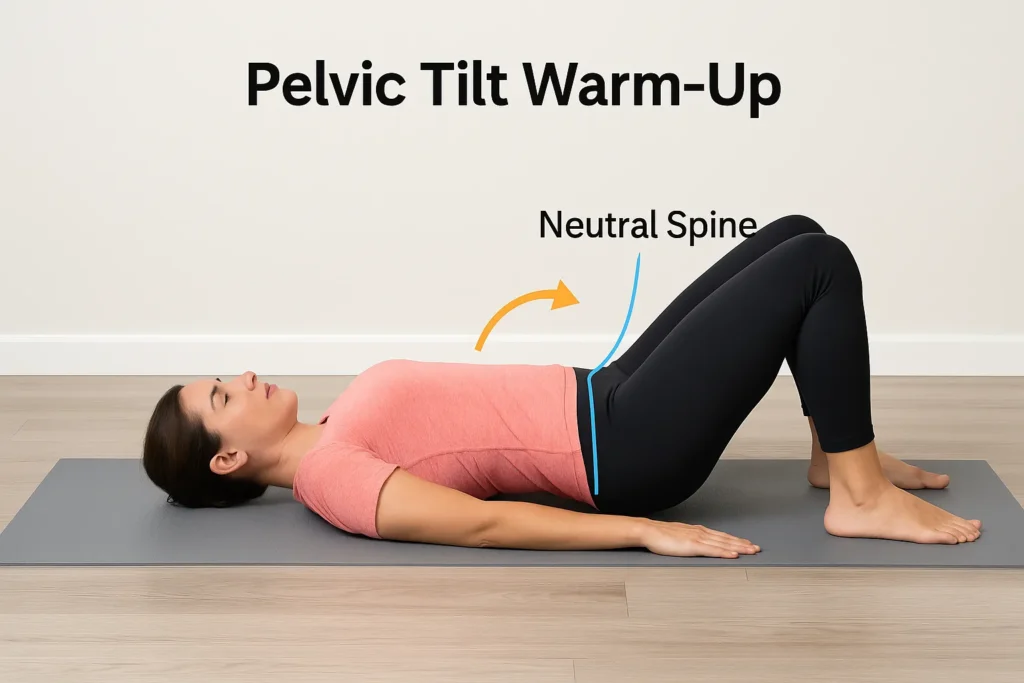
How to Do It:
- Lie on your back with knees bent and feet flat on the floor (hip-width apart).
- Keep your arms relaxed by your sides.
- Gently tighten your abdominal muscles and flatten your lower back against the floor by tilting your pelvis up.
- Hold the tilt for 5–10 seconds, then relax.
- Repeat slowly for 2 minutes.
Why It Works:
Pelvic tilts activate and strengthen your core and lower back muscles. This helps support your spine and relieves pressure on the sciatic nerve, especially if your pain originates from spinal misalignment or posture-related compression.
2. Knee-to-Chest Stretch (2 Minutes)
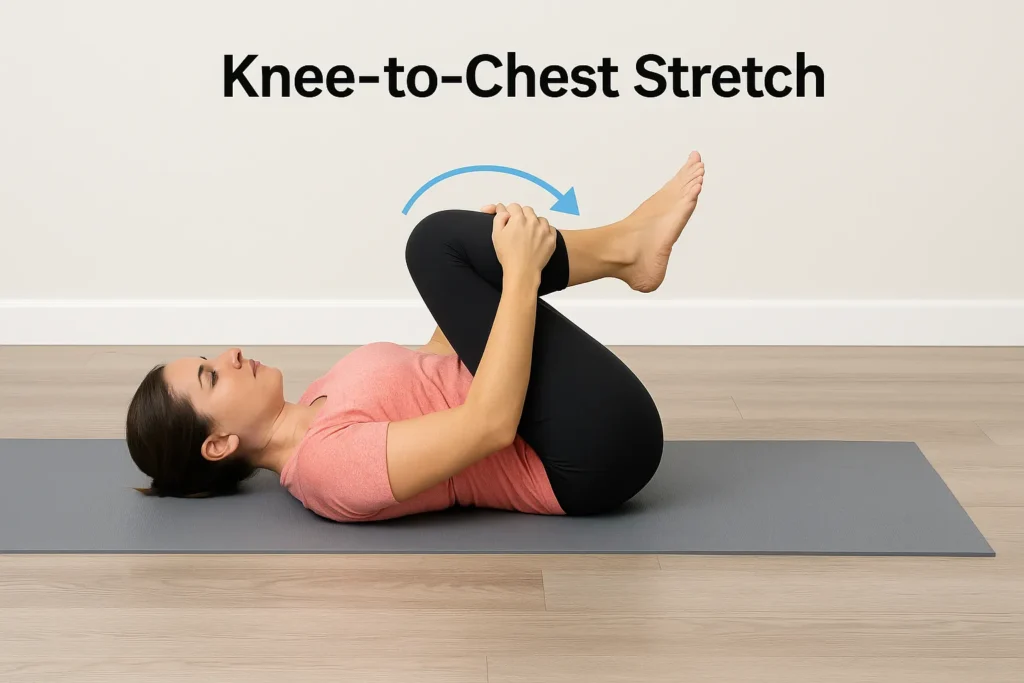
How to Do It:
- While lying on your back, bend both knees.
- Gently pull one knee toward your chest with both hands, keeping the other foot flat on the floor.
- Hold for 30 seconds, then switch legs.
- For an extra stretch, pull both knees to your chest.
- Repeat the full cycle twice.
Why It Works:
This stretch gently elongates the lower spine, easing pressure on the sciatic nerve as it exits the lumbar spine. It also relaxes tight glute and hip muscles, which often contribute to sciatic compression.
3. Seated Spinal Twist (2 Minutes)
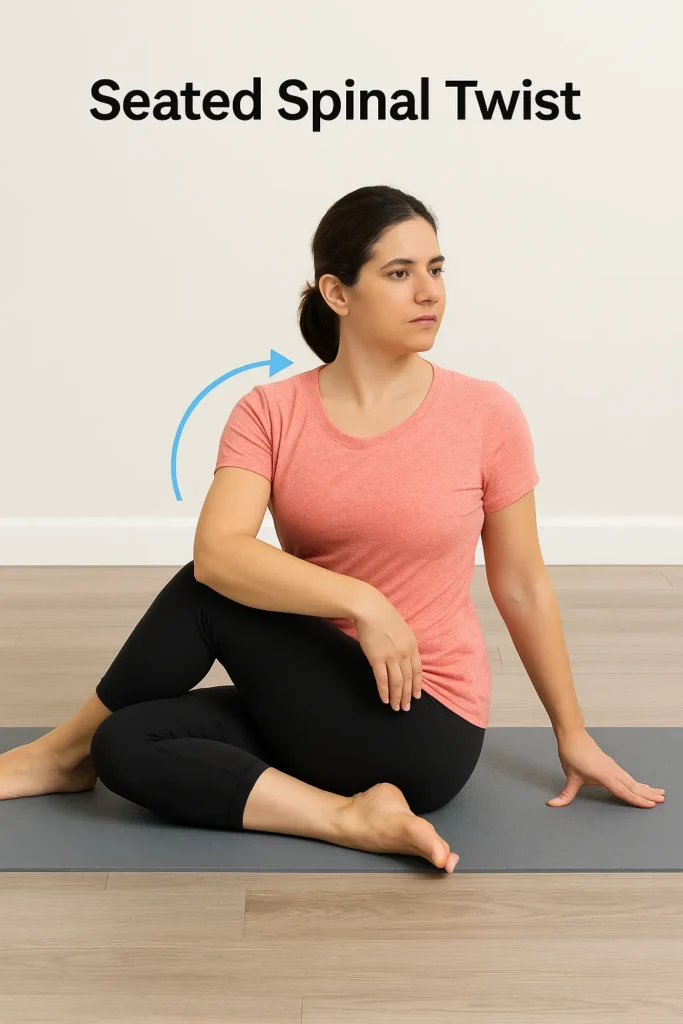
How to Do It:
- Sit upright on a chair or on the floor with your legs extended.
- Cross your right foot over your left thigh (if on the floor) or simply plant it outside your left leg (if on a chair).
- Place your right hand behind you, and your left elbow on the outside of your right knee.
- Gently twist your torso to the right while exhaling.
- Hold for 30 seconds. Inhale and return to center. Switch sides and repeat twice.
Why It Works:
Twisting stretches your paraspinal muscles and rotates the spine, helping decompress joints and free the sciatic nerve from tight connective tissues in the lower back and hips.
4. Standing Hamstring Stretch (2 Minutes)
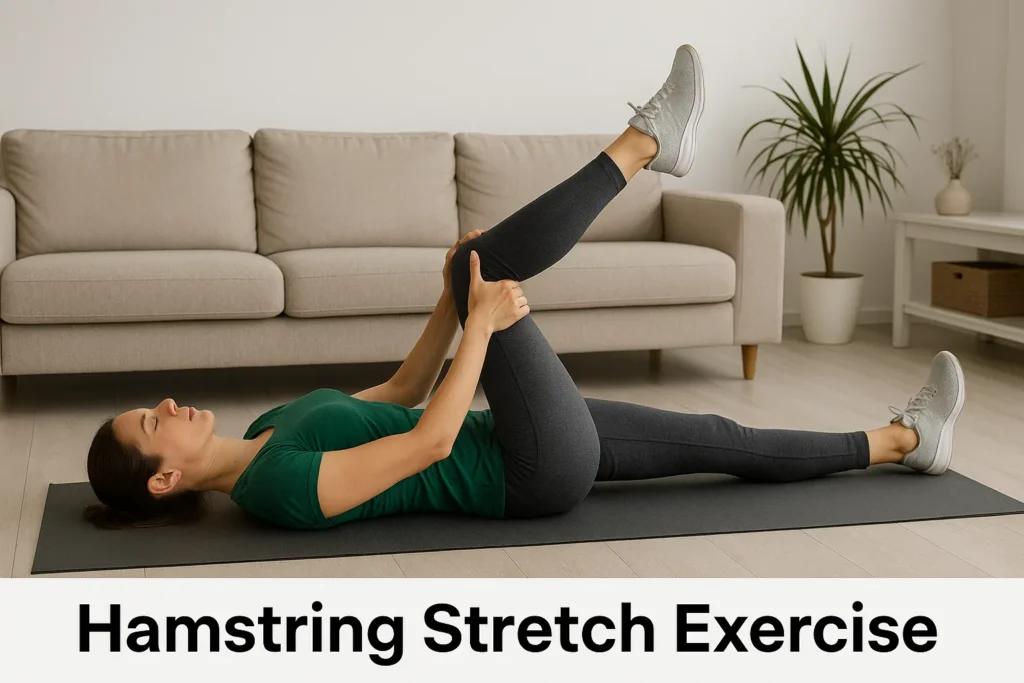
How to Do It:
- Stand tall and place one heel on a low surface (like a chair or step).
- Keep the leg straight and flex the foot so your toes point upward.
- Gently bend at your hips (not your back) toward your lifted leg.
- Keep your back straight and hold the stretch for 30 seconds.
- Switch legs and repeat the cycle twice.
Why It Works:
Tight hamstrings can tug on the pelvis, leading to strain on the lumbar spine. Loosening them can relieve tension down the sciatic nerve’s path, especially in the back of the thigh.
5. Nerve Glide Flow With Deep Breathing (2 Minutes)

How to Do It:
- Lie flat on your back with legs extended.
- Bend one knee and slowly extend the leg straight upward toward the ceiling while pointing your toes toward your face.
- Once fully extended, slowly lower it down and switch legs.
- Breathe deeply in rhythm with each movement—inhale when lowering, exhale when lifting.
- Repeat for 2 minutes, alternating legs smoothly.
Why It Works:
This is a form of neural mobilization or “nerve flossing.” It encourages the sciatic nerve to glide smoothly within its surrounding tissues, breaking up adhesions and improving mobility. The deep breathing stimulates the parasympathetic nervous system, which can reduce muscle guarding and pain sensitivity.
Total Time: 10 Minutes
- No equipment needed
- Can be done morning and night
- Can be safely modified for all fitness levels
- Suitable for most sciatica causes (piriformis syndrome, disc issues, posture problems)
If you’re sitting all day, do this at lunch and before bed to prevent pain buildup.
Prevention is as important as treatment. Add these daily habits to support long-term sciatic nerve health:
When to See a Doctor
While this 10-minute method is safe for most, you should consult a healthcare professional if you experience any of the following:
- Numbness in the groin or inner thighs
- Sudden loss of bladder or bowel control
- Progressive weakness in the legs or feet
- Pain that persists or worsens after multiple days of self-care
These may indicate serious nerve compression, such as cauda equina syndrome, which requires immediate intervention.
The Bottom Line
You don’t have to live with sciatic nerve pain, nor do you need to rely on pills or pricey procedures. With just 10 minutes a day, you can start reversing discomfort, regaining mobility, and enjoying life again naturally and confidently.
This isn’t a miracle cure. But it is a science-backed method that’s helped thousands. And it can help you too starting today.

